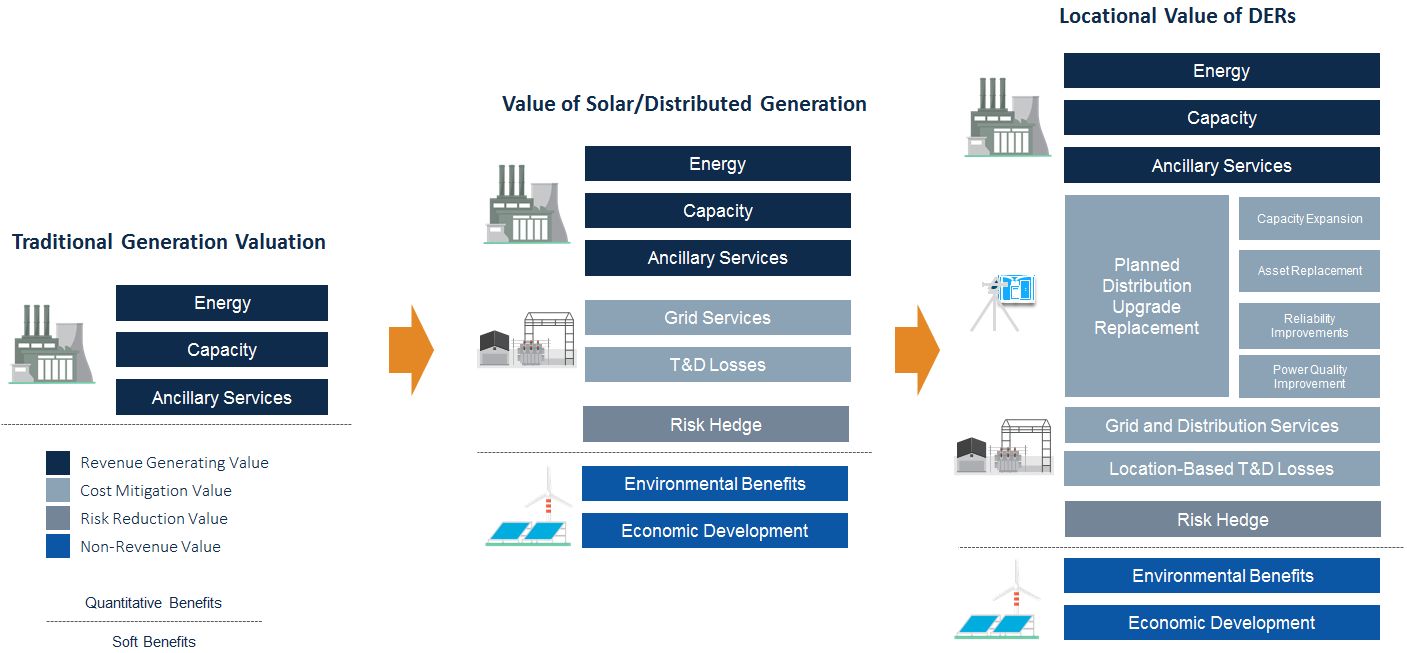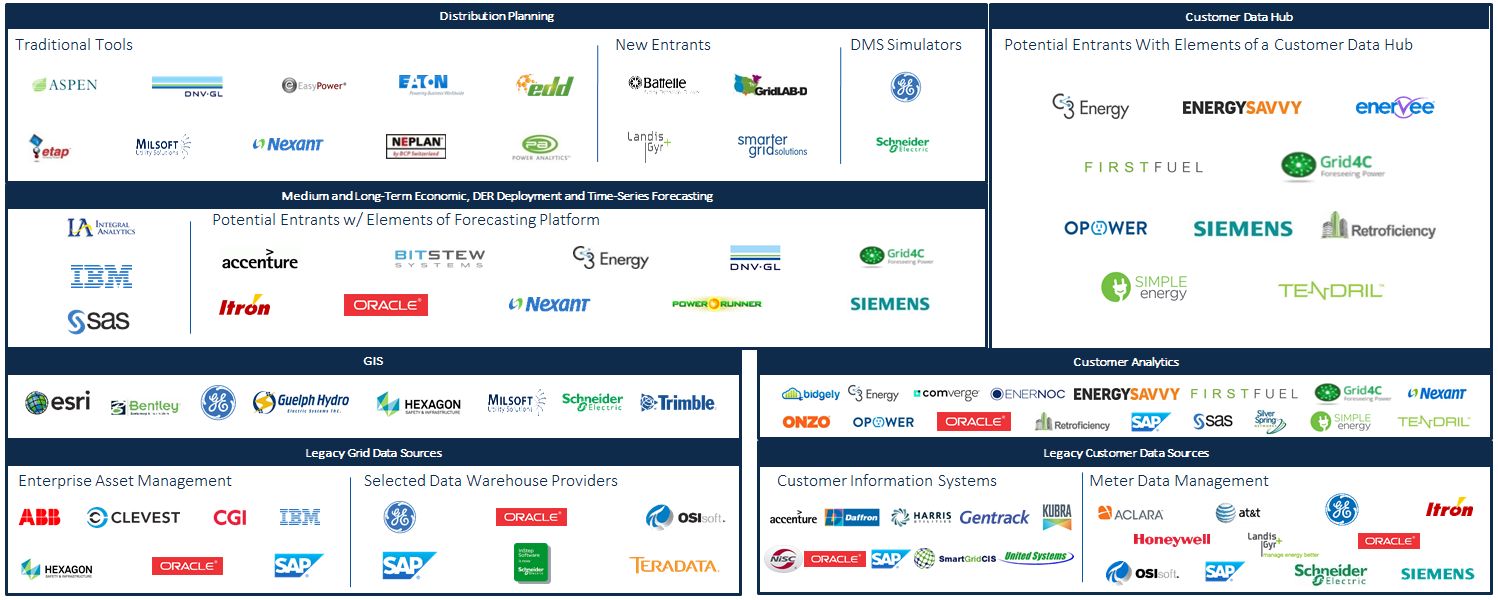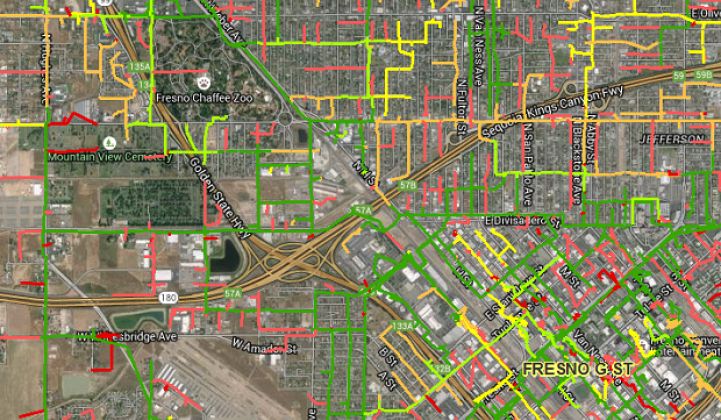Regulators and utilities across the country are grappling with the valuation of distributed energy resources (DERs) such as solar, energy storage, and energy efficiency, as costs continue to fall and penetration increases. According to a new report from GTM Research, Unlocking the Value of DER 2016: Technology Strategies, Opportunities and Markets, despite DER growth, few states are developing the policies, technology ecosystem and data infrastructure required to enable the location-based valuation systems that will underlie the development of distribution integrated resource planning and DER procurement processes for grid services.
The report describes the evolution of energy resource valuation as utilities and regulators move toward the development and adoption of locational valuation. In fact, a new GTM Squared study found that seven out of 10 regulators, utilities and solar industry providers expect customer-sited solar to be compensated based on locational factors in 2020.
FIGURE: The Evolution of Energy Resources Valuation

Source: GTM Research and PG&E
California and New York are the first states to begin to develop these formulas and data infrastructures, as other states, such as Minnesota and Washington, are considering similar but more limited efforts. As public utility commissions seek to develop consensus on key requirements, services and data access questions, utilities in these states are tasked with integrating legacy data systems with new software to provide the necessary insights to determine optimal resource and infrastructure mixes. This software ecosystem leverages existing grid and customer data sources to feed new specialized medium- and long-term forecasting, distribution planning and customer hub applications.
FIGURE: Utility DER Valuation Vendor Landscape

Source: GTM Research report Unlocking the Value of DER 2016: Technology Strategies, Opportunities and Markets
“The development of an overarching, long-term algorithm for the value of distributed resources will be a foundational tool for utilities to compare procurement options and choose the optimal combination of low-cost, high-value grid upgrades that empower and leverage customer and utility investments to increase system stability, reliability, power quality and grid efficiency, as well as reduce carbon intensity,” said Ben Kellison, author of the report and GTM Research’s director of grid research.
A utility’s ability to plan, simulate, quantify and monetize the value created by DERs is a central challenge to the ongoing evolution of the electric utility industry. The success of this valuation effort will accelerate the deployment of DERs, while finally directing these resources to the optimal locations to provide value to asset owners as well as the network.
***
For more information, download the report brochure here.



